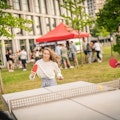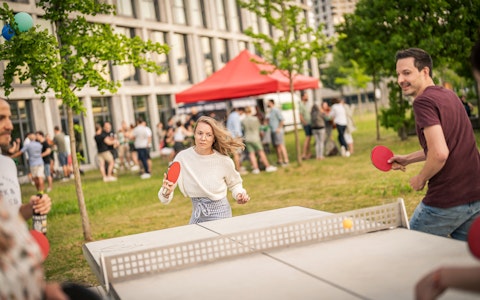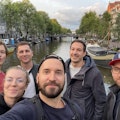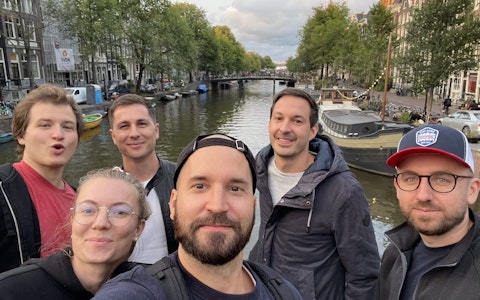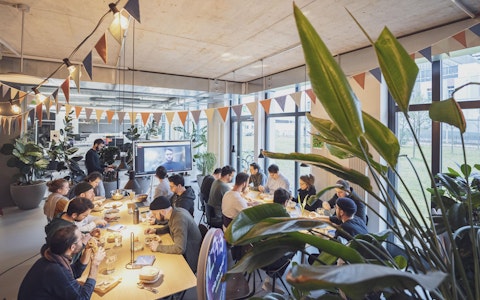Becoming more sustainable

This could be a simple story. One with a beginning and an end, problem seeks solution and finds it, in between a few adversities and a lot of heroism, one or two plot twists and at the end a heroine of everyday life comes along, ties up the garbage bag, puts out the light and carries it out. And there's no corpse inside (we can't afford the Coen Brothers).
The story might go like this: In 2019, the world discovers that climate change exists. In 2020, a report is written in which Sustainability is defined. In 2021, we at smartive will sit down together and see what this means for us. In 2022, we'll put it into practice. This sounds in the background Bing!, welches früher die fertig gebrannte CD ankündigte (hello, fellow kids), et voilà: 100% sustainable!
It would be nice. Or maybe not, because: What would be left to do then? And anyway: happy endings are all well and good, but it's more exciting to help write the plot.
Prologue
We've been around since 2012, so 188 years too late for the discovery of the greenhouse effect and 116 for the first climate model40 for the discussion about Limits to growth and also the term Sustainability has already been shaped in the 1980s. With ESG really got going in 2004and the IPCC had already published four fat reports 12 years ago.
Since then, however, the topic has become even more topical. Reason enough to ask ourselves: Is smartive sustainable?
Well, we build digital products, not diesel engines. And high-quality ones, which means they run for a while. The well-being of our employees is also a high priority; the company is on a solid footing and belongs to its employees. Vegan food is served at the summer party. That actually sounds quite sustainableright?
So we could close the bag here and pat ourselves on the back: it's okay. But we wouldn't be smartive if someone didn't stand up and say: The bag is a barrel! Let's open it up and see if it has a bottom!
Recap: Data! More data! All data!
The year is 2021 as we set off on our sustainability journey. To put our efforts on a solid footing, we bring external consultants on board. It soon becomes clear that we don't need to revisit the S (social) and G (corporate governance) in ESG - we are already doing a lot for good working conditions, and a lot has already been done or is still being done in terms of corporate governance.
That leaves E for environment-Elt. The big data collection begins: waste, heating, recycling, commuting, data centers, electricity consumption, events - everything is examined, estimated and calculated, based on the Greenhouse Gas Protocol. At the end there is one number: 42. But what was the question again?
«Insight 1: You can invest a lot of time in quantifying environmental impacts. This is time-consuming, especially for SMEs. However, the result has limited informative value, as there is no standardized basis for comparison.»
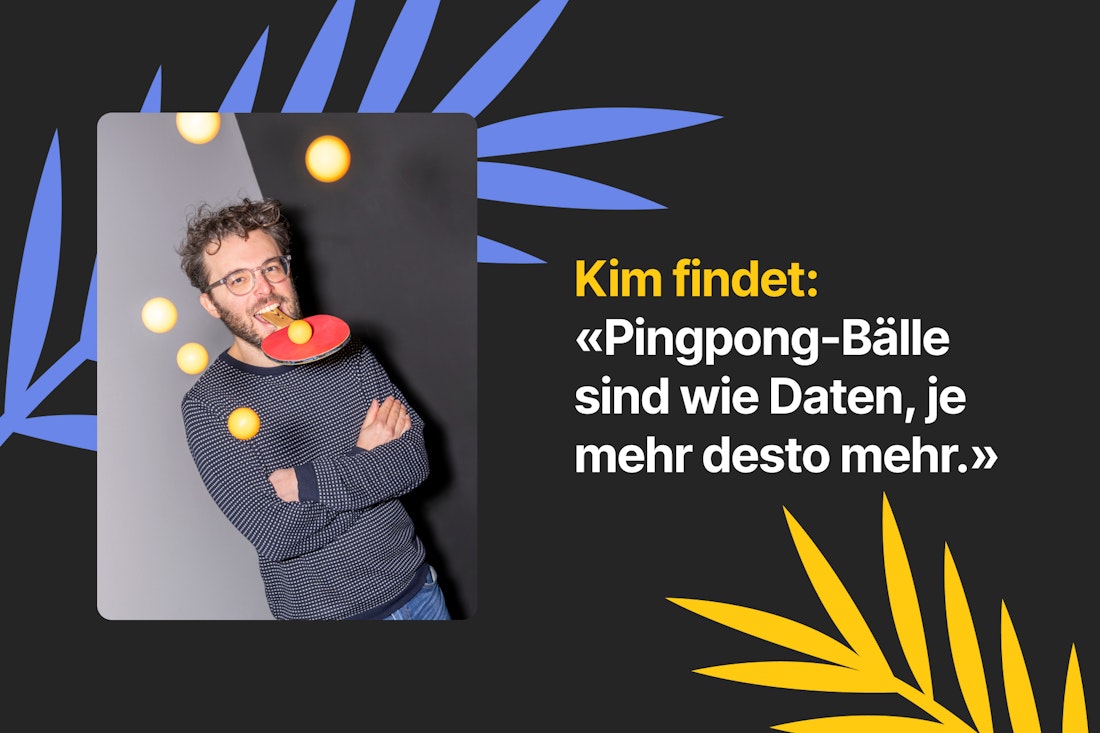
What to do?
A lot has already been done with transparency, but at the same time nothing has been done yet. So we move on to harvesting and shake up the data until topics fall out that we can work on. That was two and a half years ago.
A very special tactic is required when shaking and sieving, the so-called lever-from-chaff separation: We look for conspicuous features that we can tweak. Together with a consultant provided by the City of Zurich, we identify areas for action:
- Power consumption
- Garbage
- Heating & ventilation
- Consumption (mainly furniture)
«Insight 2: There is always something to do. Although we are in a good position (and many things are beyond our control), we have found a lot of things that are worth tackling. And some of them are not even particularly difficult.»
Do something!
In order to introduce changes, improve procedures and keep processes running, we need a committee. We form a group (i.e. a role, as it is called at smartive) that meets regularly and tackles the issues. Two examples:
We are reviewing possible measures to minimize the Power consumption to reduce - decommissioning an additional fridge, potential improvements to the hot water, timing the automatic switch-off for the coffee machine. Unfortunately, there's not much we can do, as we've just moved into a new office and have already thought about what we need. For the electricity we need, we are switching to natural electricity and buying solar panels from the electricity supplier.
At the Garbage Mr. Green is the solution for us: recyclables are collected in a bag that is picked up regularly. Everyone is told what to put in the bag and written to. We clarify whether we can set up a compost heap (difficult) or at least a separate garbage can (time-consuming).
«Insight 3: Sustainability is not what you think, but what you do. So go ahead, and if it doesn't work: Don't despair, dare to iterate. We know that from Scrum.»
Talk about it
Then there is the field of the should-could-would-be - In other words, the things where you can't flip a switch, throwing money at it doesn't help and organizing it away doesn't work. The big boxes with letters of recommendation "change everything once, otherwise it's a hot summer forever" and labels like Awareness and Behavioral changes.
But that's just it: Big boxes also hold many opportunities for better plots. And after all, we are techies and know how to deal with complexity: Divide and conquer. Don't implement the whole app at once, search-and-liking-and-sorting-and-login-and-design-and-the-whole-rest, but unpack it to a manageable size: One component for the search. One for the Like. And split up the implementation of the design elements again.

For example, the topic of Food. Eating plants has a much lower impact on the environment than animals and animal products. So we prefer food made from plants to food made from animals at business events (which has even been cultivated 🎉). Bonus: Word gets around - Not bad at all, these veggie pitas!
With this tailwind, we are devoting ourselves to the topic of Mobility and travelstart unpacking and realize: We are reaching a limit. The Umweltgrüppli proposes a guideline that favors the train over flying not only for commuting (where it already dominates alongside the bicycle), but also for international trips to congresses. With good reason: It really does make a difference. And it doesn't hurt.
However, not everyone sees it that way. There are discussions: Do bans suit smartive? On the other hand, is it a ban if we as a company do something do not pay? The guide now states that we in principle not pay for flights - but the first time a bad train connection stops someone from going to a conference, this rule can be questioned again.
«Insight 4: Even things that cannot be solved must be put on the table. Measures aimed at individual behavior provoke discussion. But discussions are welcome: awareness is not created by regulations, but by raising the issue.»
Conclusion
In 2024, it will no longer make Bing! and the CD is burned - the playlist is constantly changing. Series are the new movies. Garbage bags are not taken out at the end of the movie, but every week. And this is really just an interim conclusion, because the process continues.
Sustainability cannot be achieved at the push of a button. The journey to greater sustainability requires exchange, commitment and sometimes several attempts. We'll keep at it.
Have you had similar or completely different experiences in your SME? Or do you have a mountain of figures that you would like to compare with ours? Or do you have a plot twist to offer? Then get in touch with us! 🤙🏃♂️📩

Written by
Kim Beyeler
